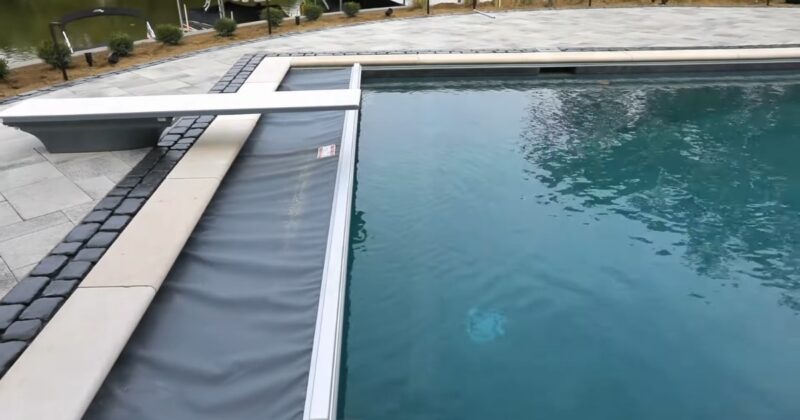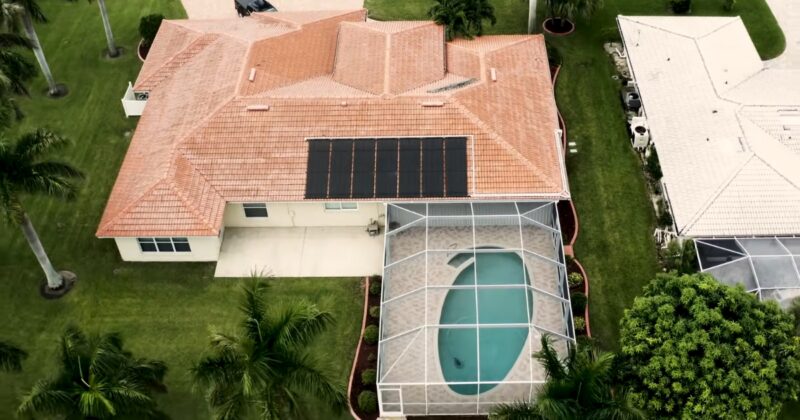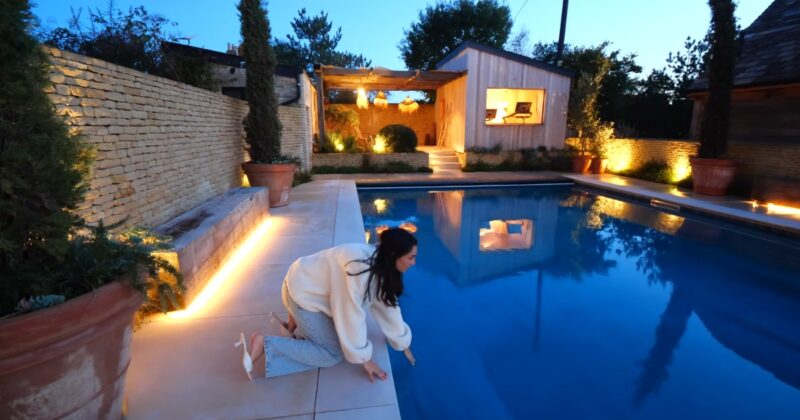Swimming pools offer a refreshing escape from the heat, but they often come with high environmental costs. However, advancements in technology and design have paved the way for more sustainable options.
Eco-friendly pools reduce chemical use, conserve water, and lower energy consumption. They embody a shift towards sustainability in the leisure industry.
Among the innovative solutions, self-cleaning pools stand out. These systems minimize maintenance and chemical needs by circulating water more efficiently, thus contributing to a healthier environment. You can read more about this at Hi-Tech Pools.
By exploring sustainable solutions, pool owners can enjoy leisure time without compromising the planet’s well-being.
Benefits of Eco-Friendly Swimming Pools
Eco-friendly swimming pools offer significant advantages over traditional pools. They use less water, energy, and chemicals, which not only reduces their environmental impact but also lowers operating costs.
By incorporating natural filtration systems, solar heating, and energy-efficient pumps, these pools promote a healthier swimming environment. They contribute to biodiversity when designed as natural pools, creating habitats for wildlife.
Owners benefit from improved water quality without the harsh effects of chemicals on skin and eyes. Additionally, eco-friendly pools enhance property value by appealing to environmentally conscious buyers.
Investing in sustainable pool solutions represents a commitment to protecting the environment while enjoying the benefits of pool ownership.
Water Conservation Techniques

Water conservation in swimming pools focuses on minimizing water usage and loss. Techniques include covering pools when not in use to reduce evaporation, using rainwater harvesting systems to fill or top off the pool, and implementing advanced filtration systems that require less frequent backwashing.
Drought-resistant landscaping around the pool area can also reduce water demand. Moreover, pool owners can opt for pool designs that naturally require less water, such as smaller pools or those with overflow systems designed to recycle water.
By adopting these water-saving practices, pool owners can significantly reduce their water footprint, contributing to conserving this precious resource.
Energy-Efficient Pool Systems
Energy-efficient pool systems are designed to reduce electricity consumption without compromising functionality. These systems include variable-speed pumps that adjust their output to the pool’s needs, solar-powered heaters and pumps, and LED lighting that consumes less energy than traditional pool lights.
Automated pool covers also contribute to energy efficiency by retaining heat and reducing the need for additional heating. By investing in energy-efficient technology, pool owners can lower their energy bills and reduce their carbon footprint.
These systems not only make pool maintenance more sustainable but also support global efforts to conserve energy and combat climate change.
Natural Pools: A Chemical-Free Alternative
Natural pools use plants and natural filtering processes to clean the water, eliminating the need for harmful chemicals. They mimic the self-cleaning properties of natural bodies of water, creating a balanced ecosystem where plants, microorganisms, and sometimes fish work together to maintain clean and clear water.
This approach provides a healthier swimming environment and enhances the landscape with a beautiful, pond-like aesthetic.
Natural pools require more space for the regeneration zone, where the cleaning process occurs, but they offer a sustainable and chemical-free option for swimming, contributing to biodiversity and offering a unique swimming experience.
Self-Cleaning Pool Technology
Self-cleaning pool technology automates the cleaning process, reducing the need for chemicals and manual maintenance. This technology involves a system of nozzles that circulate water efficiently, ensuring that debris is directed toward the filtration system.
By maintaining constant water movement, these pools prevent algae growth and distribute chemicals more evenly, if used, reducing the overall amount required. Self-cleaning systems can be programmed to operate during off-peak hours, further reducing energy costs.
This innovation not only saves time and money but also supports a more sustainable pool environment by minimizing chemical use and energy consumption.
Solar Heating for Pools

Solar heating systems harness the sun’s energy to warm pool water, offering an eco-friendly alternative to conventional heating methods. These systems involve solar panels or mats that absorb sunlight, transferring the heat to the pool water circulating through them.
Solar heating extends the swimming season without the high energy costs associated with gas or electric heaters. It represents a renewable energy solution that reduces greenhouse gas emissions and reliance on fossil fuels.
While the initial setup cost can be higher, the long-term savings on energy bills and the positive environmental impact make solar heating an attractive option for pool owners.
Sustainable Pool Construction Materials
Choosing sustainable materials for pool construction plays a crucial role in reducing the environmental impact of pools. Options include recycled glass tiles, natural stone, and eco-friendly concrete alternatives that require less energy to produce.
These materials not only offer durability and longevity but also contribute to the aesthetic appeal of the pool. By selecting sustainable construction materials, pool builders and owners can decrease the carbon footprint associated with building and maintaining pools.
Additionally, these materials often require less maintenance, further reducing the pool’s environmental impact over its lifespan.
Landscaping for Reduced Water Evaporation
Landscaping around swimming pools can significantly reduce water evaporation, one of the main sources of water loss in pools. Strategic planting of trees, shrubs, and ground cover can provide shade over the pool and windbreaks that minimize evaporation.
Choosing drought-resistant plants reduces the overall water demand of the landscaping, further conserving water. This approach not only saves water but also enhances the pool area’s beauty and privacy.
Effective landscaping contributes to a more sustainable pool environment by combining water conservation with aesthetic improvements.
Eco-Friendly Pool Maintenance Practices
Eco-friendly pool maintenance practices focus on reducing the environmental impact of pool upkeep. This includes using less aggressive, more natural pool chemicals, optimizing filtration and circulation systems to reduce energy use, and regularly cleaning filters and skimmers to maintain efficiency.
Pool owners can also adopt water-saving measures, such as fixing leaks promptly and using a pool cover to minimize evaporation.
By implementing these practices, pool owners can maintain their pools more sustainably, ensuring clean and safe water while minimizing their ecological footprint.
Community Pools as a Sustainable Option

Community pools represent a sustainable alternative to private pools by serving multiple families or an entire community, reducing the per-person environmental impact.
These pools can implement large-scale eco-friendly technologies, such as advanced filtration systems, solar heating, and water conservation measures, more cost-effectively than individual pool owners.
Community pools also foster social interaction and physical activity, contributing to the well-being of the community. By sharing resources, communities can enjoy the benefits of swimming facilities while adhering to principles of sustainability and conservation.
Delve into sustainable practices to minimize water usage at home, including eco-friendly plumbing strategies, which can significantly contribute to the overall environmental impact of water conservation efforts.
Conclusion
Adopting sustainable practices in swimming pool design, construction, and maintenance offers a path forward for reducing environmental impact while still enjoying the benefits of a personal or community pool.
Innovations in technology and a commitment to sustainability can lead to significant improvements in water and energy conservation, chemical use reduction, and overall ecological footprint minimization.








